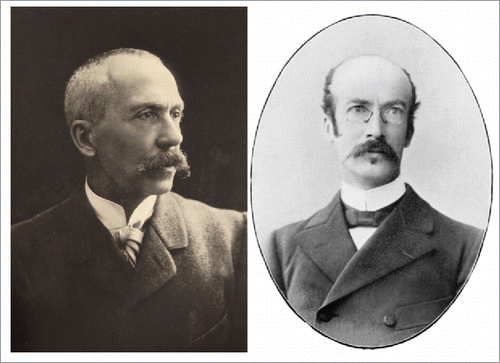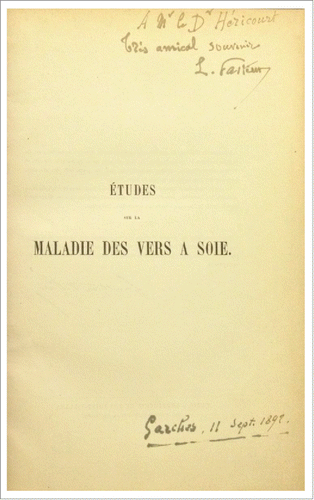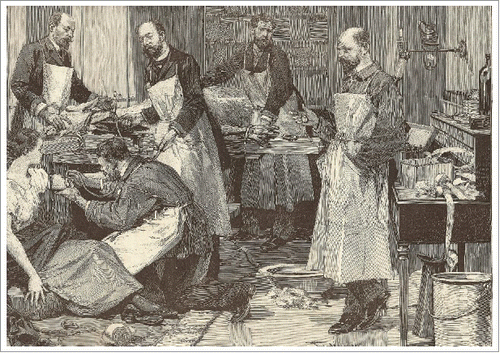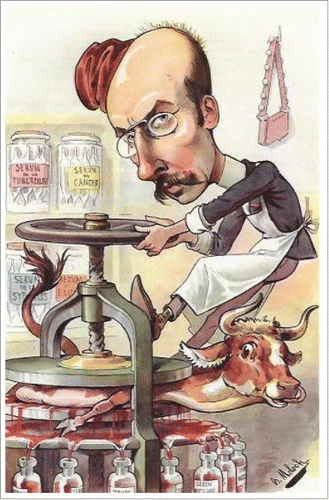Figures & data
Figure 1. Charles Richet (1850–1935) (left) and Jules Héricourt (1850–1938) (right). (Fonds Watier, Rabelais Fundation; University Library of Medicine, Université François-Rabelais de Tours).

Figure 2. Dedication of Louis Pasteur to Jules Héricourt, at the front of his emblematic book Etudes sur la maladie des vers à soie (Fonds Watier, Rabelais Fundation; University Library of Medicine, Université François-Rabelais de Tours).

Figure 3. Transfusion of blood from a goat to a consumptive (tuberculous) woman by Samuel Bernheim (1855–1915) (L'Illustration. 1891 Mar 7;2506:213. Fonds Watier, Rabelais Fundation; University Library of Medicine, Université François-Rabelais de Tours). Samuel Bernheim, transfusing goat's blood directly to humans, tried a variant of the method of 2 researchers from Nantes (France), Georges Bertin (1833–1916) and Jules Picq.Citation89 Bertin and Picq worked on blood transfusion against tuberculosis from 1890.Citation90 Like Richet and Héricourt, they focused on this dreadful illness, but contrarily to them, they only tried a transfer of innate (natural) immunity, considering goats as naturally resistant against tuberculosis. Bertin and Picq are the inventors of the word “hématothérapie,” which was widely used in France at that time.Citation91 They were also the first to perform a blood injection (subcutaneously) to a human being with tuberculosis, on the 3rd of December 1890.Citation92 This operation caused a sensation worldwide, as witnessed by a New York Times article in January 1891.Citation93

Figure 4. Caricature of Jules Héricourt published in the issue #75 of Chanteclair in 1911 (Fonds Watier, Rabelais Fundation; University Library of Medicine, Université François-Rabelais de Tours). Just after their works on serotherapy, Richet and Héricourt set up a raw meat juice-based therapy against tuberculosis, which they called “zomothérapie.” This picture shows Héricourt squeezing out raw meat juice with a printing press. In the background, some various sera phials remind his contributions to serotherapy (tuberculosis, cancer, syphilis). A cartridge pouch on the wall (pink-colored because of the “Revue rose,” nickname of the “Revue scientifique” for which Héricourt was successively secretary, chief editor and manager, from 1887 to 1903) evokes the military past of Héricourt.

